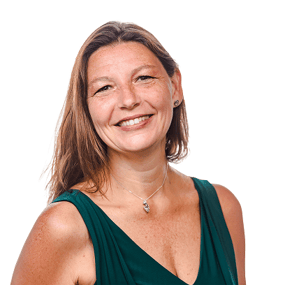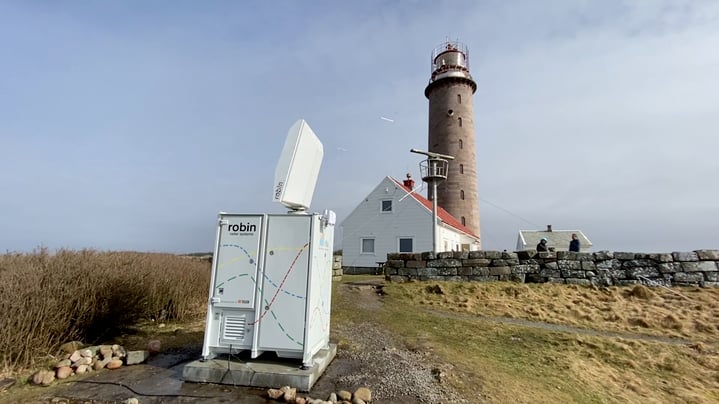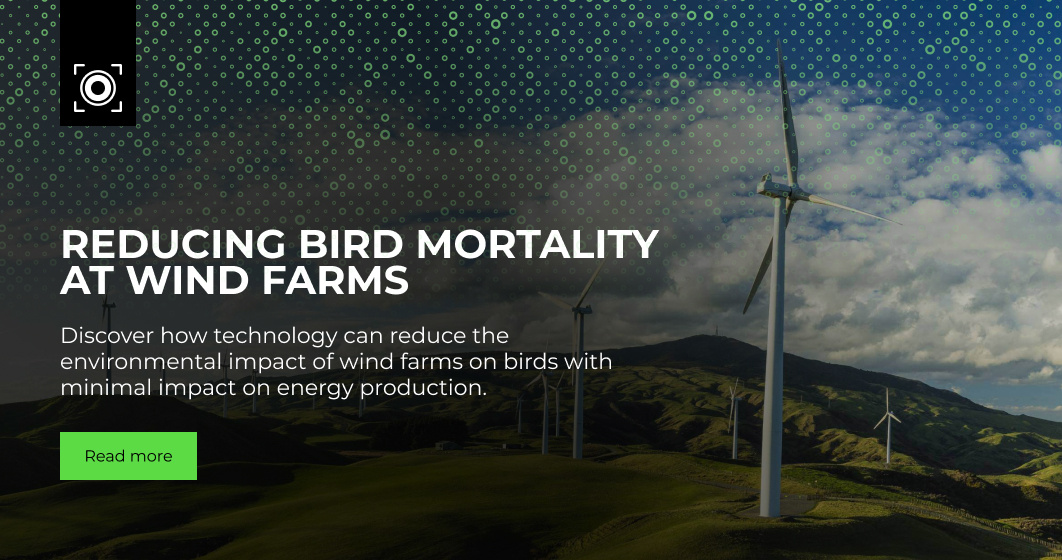Wind farms can impact birds in a number of ways, making reliable and long-term measurements and the gathering of scientific data on bird movements in the area, as well as migration activity, an important task. Sibylle Giraud, VP Wind and Environmental Practice at Robin Radar Systems, explores some of the latest technology to make the job easier.
PES: It’s very nice to speak with you Sibylle and get to know more about Robin Radar Systems. How long has the company focused on wildlife protection and particularly avian protection?
Sibylle Giraud: Our goal has always been to create a safer, more secure world for humans and wildlife. Before the inception of Robin as a company, it was a research project within TNO, the Dutch Research Institute for Applied Science. When our CEO, Siete Hamminga, spun out the business in 2010, the focus was to prevent collisions between birds and planes.
I joined Robin in 2018 to expand our scope and create a team that fully focuses on avian protection in the wind and environmental segment. It’s been a long, extraordinary journey over the last five years to see our flagship system, MAX, being gradually deployed all over the world for leading wind players and environmental consultancies, both onshore and offshore.
What I love the most is the passion within the industry to keep finding innovative ways to protect birds whilst helping the green transition. The pace of innovation only seems to be accelerating lately, in every corner of the planet. It’s evident with our radars now deployed everywhere, from Asia, Australia and South America and throughout Europe.
PES: Do you think we can balance the need to preserve biodiversity at wind farms with the need to expand renewable energy supply?
SG: Yes, technology is providing us with the tools to be able to achieve this. It’s exactly the challenge we took on and are trying to solve at Robin.
The world certainly needs more renewable energy, and wind farms have a key role to play in the energy transition. However, you simply cannot protect the planet and at the same time destroy wildlife. We need to develop even better tools and solutions to mitigate the impact of wind farms on bird populations.
In the next couple of years, automated turbine shutdown-on-demand and ‘floating’ radar systems offshore will become the standard within the industry. These types of technological advances will be key to reaching our environmental targets.

Sibylle Giraud
PES: It is important to engage with environmental organisations, and regulatory authorities to ensure the acceptance and support of wildlife protection initiatives at wind farms, isn’t it?
SG: Absolutely. I want to stress that Robin is only a part of the equation, and we take a solely facilitatory role by providing innovative tools and solutions to keep wildlife safe.
It’s thanks to an active ecosystem of government institutions, environmental consultancies, and other bird protection entities that we are progressing at the speed that we are.
If I may, I want to highlight a few of the environmental experts that we’ve been working with closely for many years: Waardenburg Ecology, NINA, 3Bird, INBO. Thank you for the great work and the knowledge you share to help us improve our solutions and advance wildlife protection initiatives across the globe!
PES: How is avian monitoring technology integrated within wind farms and is it becoming in some cases mandatory?
SG: These technologies are indeed becoming standard, and often a mandatory practice in wind farms. Governments and the public at large are more aware of the impact of wind farms on wildlife. And rightfully so. It’s a trend that we saw developing rapidly in northern Europe a few years ago, and it’s now spreading to other regions.
Our radars are used at every phase of the wind farm cycle. Prior to construction, you need to complete the environmental impact assessment, which will assist in respecting the ecosystem around and on the wind farm. A comprehensive data set will need to be collected for a year or two before obtaining a permit for construction. Usually, we see that environmental consultancy agencies use the data from our radar systems in conjunction with visual observations. The radar provides size, speed, height, location, and flight path data, and can record thousands of tracks simultaneously, day or night. When this data is combined with visual observations, from a camera, for instance, you can also identify specific species of bird.
Often it’s actually a precondition that a bird radar becomes a permanent part of the wind farm itself, both for monitoring purposes and shutdown-on-demand (SDOD). Our radars can automatically switch turbines off and on again to mitigate the risk of collision and bird mortality. Depending on the situation, we can do this for single turbines or clusters.
PES: What considerations are given when looking at a new potential project?
SG: The list of factors we take into consideration is lengthy, and each project and environment has unique challenges. The key is to understand what type of birds might be at risk, as well as the particular characteristics of the areas that need to be monitored.
The expertise of environmental consultants and researchers is often essential as they have usually done preliminary visual observations and have a general understanding of the behaviours of the local bird population, migratory paths, as well as specific conservation challenges.
It’s all about location, location, location! Choosing the optimal location will be a winning factor in the quality of insights you will gather. Hills, buildings, waves, trees, and other objects can create blindspots or clutter in the radar coverage. You also need to take into consideration technical requirements such as power or internet connection, this can be challenging in remote areas like Patagonia or offshore. That’s why we have a team of experienced technical consultants that work with our clients to help find the best possible location and solution for the deployment of the radar system.
.jpg?width=730&height=547&name=max-trailer-patagonia-2%20(2).jpg)
MAX in Patagonia, Chile
PES: There are concerns about the potential disruption of avian migration patterns around wind farms; what mitigation strategies are in place?
SG: This is a very relevant question. For the last couple of years, we’ve been working with the University of Amsterdam and the Dutch Ministry of Infrastructure and Water Management, to better understand avian migration patterns over the North Sea.
It’s amazing to see our radar data analysed by bright young researchers like Dr. Maja Bradarić and Jens van Erp to develop a model that will be implemented for turbine shutdowns during peak migration periods. This optimises the electricity supply while mitigating the highest risk level of collision.
These types of breakthrough projects are only feasible due to the commitment and close cooperation of different parties, including the wind farm owners, grid operators, and several ministries and government institutions.
As we operate on a transnational level, we can exchange information with many leading players in the wind ecosystem. We’re noticing that this kind of collaboration is being progressively rolled out across the globe, and we are very excited to be able to provide one of the critical pieces of this puzzle. It’s exciting to help advance our collective knowledge on, for example, migration routes and bird behaviour.
PES: Are there any specific studies or case studies implemented by you at existing wind farms that you can elaborate on?
SG: We are very proud of our landmark project in Finland, where we assisted the operator in obtaining the permit to build the first offshore wind park in the country. And another project I’m very excited about is that we have recently installed a double automatic shutdown mechanism at the Maasvlakte 2 wind farm in the Netherlands. It’s a groundbreaking system that helps protect migratory birds as well as some locally endangered species.

MAX at Lista Lighthouse, Norway
PES: Can you share some specific examples of innovative solutions that Robin Radar Systems is currently developing or exploring?
SG: I can’t disclose everything on our innovation roadmap, but I’m excited to share that the main innovations that you’ll see coming from Robin Radar Systems in the next few years will be focused on three key topics. First of all, the offshore segment and floating technology are expanding rapidly. We’ve already got years of experience deploying our systems on offshore turbines after the wind farm is constructed, but now we’re developing solutions targeted at the pre-construction phase.
Secondly, what is sometimes referred to as the ‘holy grail’: species recognition. We’re exploring partnerships with leading camera and sensor companies in this field, and are working hard to validate our integrated solutions. Providing a holistic solution will be key for the future.
Last but not least, our R&D department has a team dedicated to advancements in AI and Deep Neural Network technology, which will help us make a giant leap forward. Stay tuned!
PES: It would be good to hear about some of the collaborations or partnerships being pursued to further research and development in wildlife protection.
SG: I spoke about our partnership with the University of Amsterdam but there is another research project which I’m very excited about. Our MAX system will be deployed in spring 2024 on the other side of the globe in Australia for the BatOneHealth research group.
This international organisation does amazing work studying the link between the loss of bats’ habitat and the spillover of bat viruses into other animals and humans. One of their researchers, which we have closely collaborated with and who is deeply involved with this project since its inception is Dr. Manuel Ruiz Aravena. Our 3D radar, built specifically to track birds, will actually be used to monitor the movement of bats, known as flying foxes in Australia. This data will then be used to develop countermeasures to stop the spread and spillover of pathogens like coronavirus. It’s the first time that Robin will study megabats, so our team is incredibly proud to be part of this project!
PES: How do you assess the long-term effectiveness and environmental impact of avian protection strategies implemented at wind farms?
SG: Our radar systems continuously monitor the wind farm over time, compiling a wealth of data that can be used to create in-depth reports. Our intuitive software visualises the data from our radars in either automatic or tailor-made reports with easy-to-analyse graphs and charts. That’s how we turn data into business intelligence and accurate insights on bird behaviour and environmental impact for all stakeholders.
The experience and intelligence we have acquired over the years in projects and applications all across the world is the biggest asset that we have. This is the key to developing effective mitigation strategies together with our clients.
At the end of the day, our clients and stakeholders are the ones driving the green transition. By pushing the boundaries of innovation in the industry, Robin Radar Systems wants to remain one of the leading facilitators.
This interview originally appeared in PES Wind Magazine, Issue 3, September 2023:
https://pes.eu.com/page-turners/wind-49/

